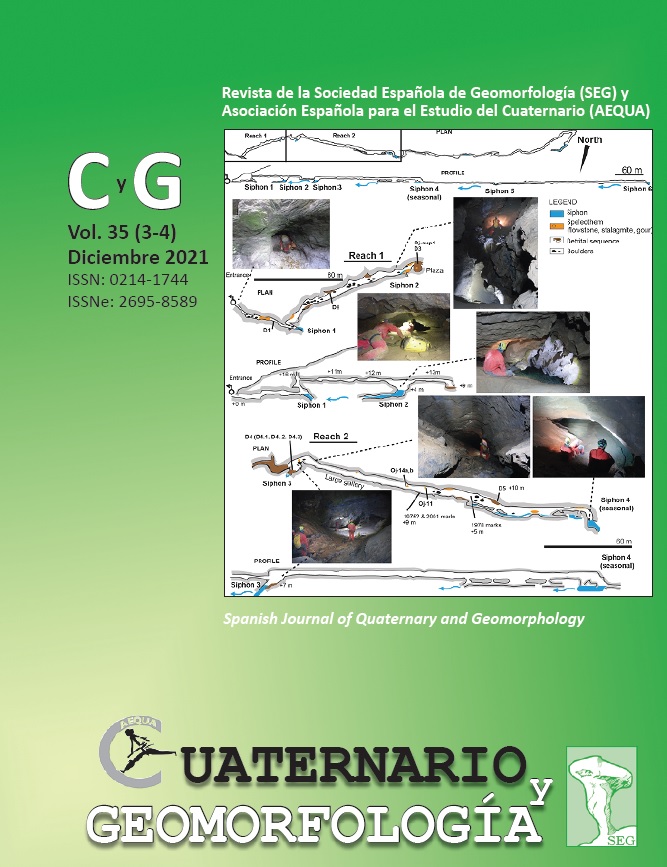Tabla cronoestratigráfica del Cuaternario de la península ibérica (v 3.0): Nuevos datos estratigráficos, paleontológicos y arqueológicos
DOI:
https://doi.org/10.17735/cyg.v35i3-4.89346Palabras clave:
Cuaternario; Cronoestratigrafía; Fauna; Prehistoria; Yacimientos; península ibéricaResumen
La tercera edición de la Tabla Cronoestratigráfica del Cuaderno de la península ibérica (v 3.0) sustituye a las versiones más antiguas editadas en 2007 (v 1.0) y 2009 (v 2.0). Desde esta fecha la Comisión Internacional de Estratigrafía (ICS), y más concretamente la Subcomisión de Estratigrafía del Cuaternario (SQS), ha estado trabajando tanto en la definición del Periodo Cuaternario como en sus subdivisiones, aportando nuevos GSSP (Global Stratotype Section and Points) para los mismos. La nueva tabla incluye los GSSPs recientemente aprobados para la subdivisión de la Serie Holocena (Groenlandiense, Norgripiense y Meghalayense), así como el nuevo piso Chibaniense (774,1 - 128,0 ka) ratificado por la IUGS a principios del 2020, que sustituye al Pleistoceno medio. Esta versión 3.0 también incluye todas las modificaciones y correcciones que han surgido desde entonces, incluyendo la actualización de datos, fechas y dataciones para los yacimientos paleontológicos y/o arqueológicos más representativos de la península. Asimismo, se ha revisado la extensión de los diferentes periodos climáticos considerados para Europa central y Alpes ajustándose a las biozonas de mamíferos y las faunas asociadas. La extensión de estas últimas ha de entenderse referida a Europa central y meridional no solo a la península ibérica. En la distribución temporal de periodos de la prehistoria y complejos tecno-culturales asociados se diferencia entre el continente africano y europeo. De la misma forma la sucesión de especies de homininos se centra también en estos dos continentes. Esta revisión ofrece una lista de referencias actualizada, así como una versión digital interactiva que se implementará próximamente.


